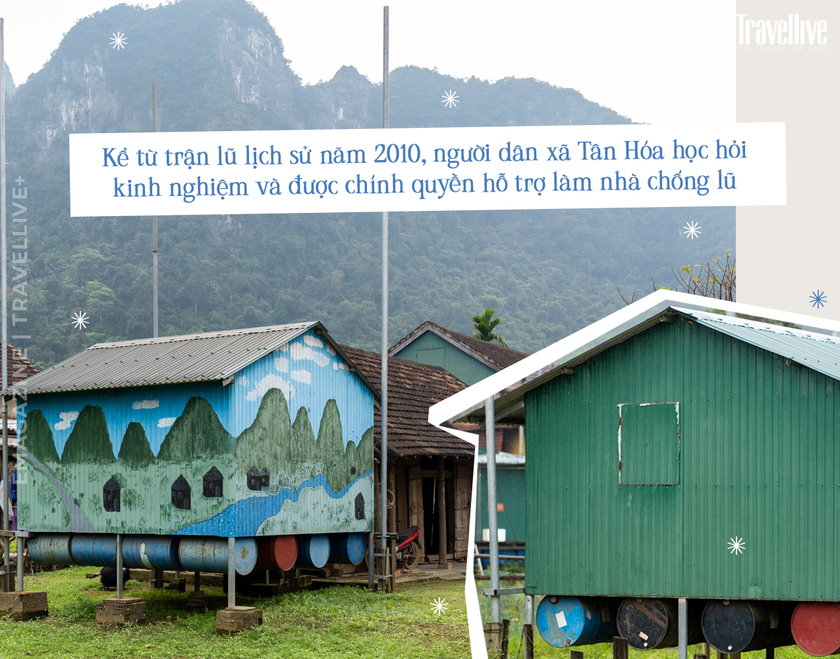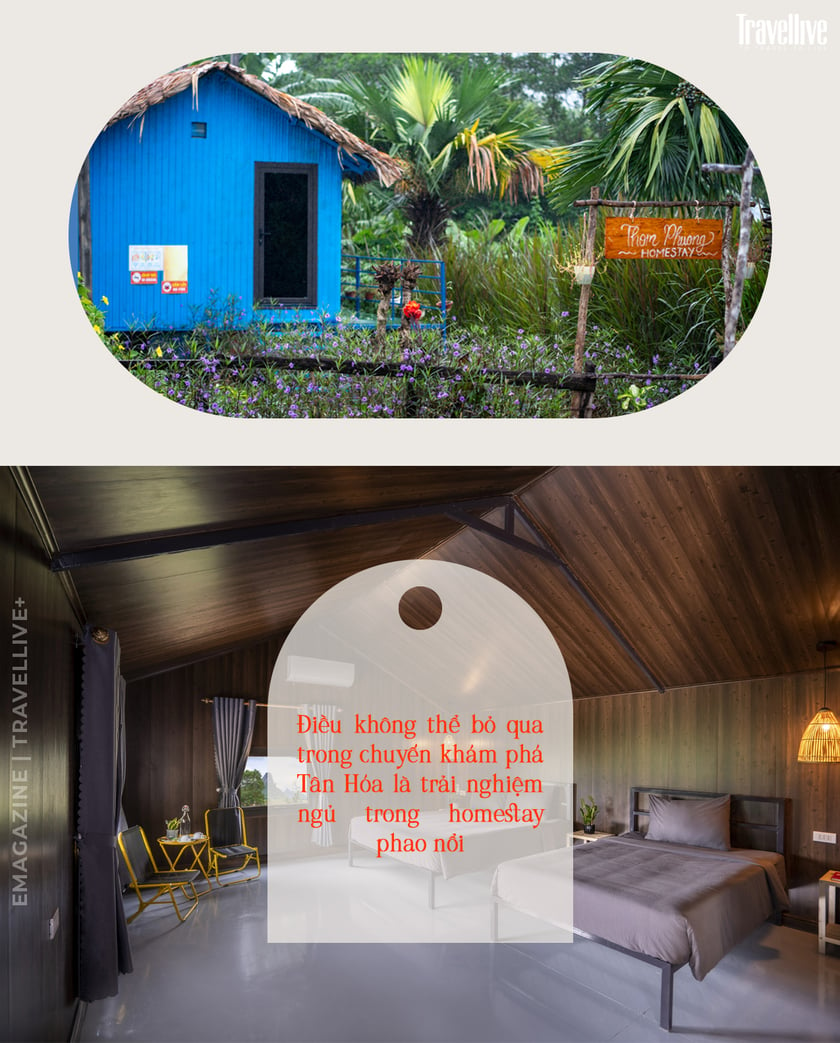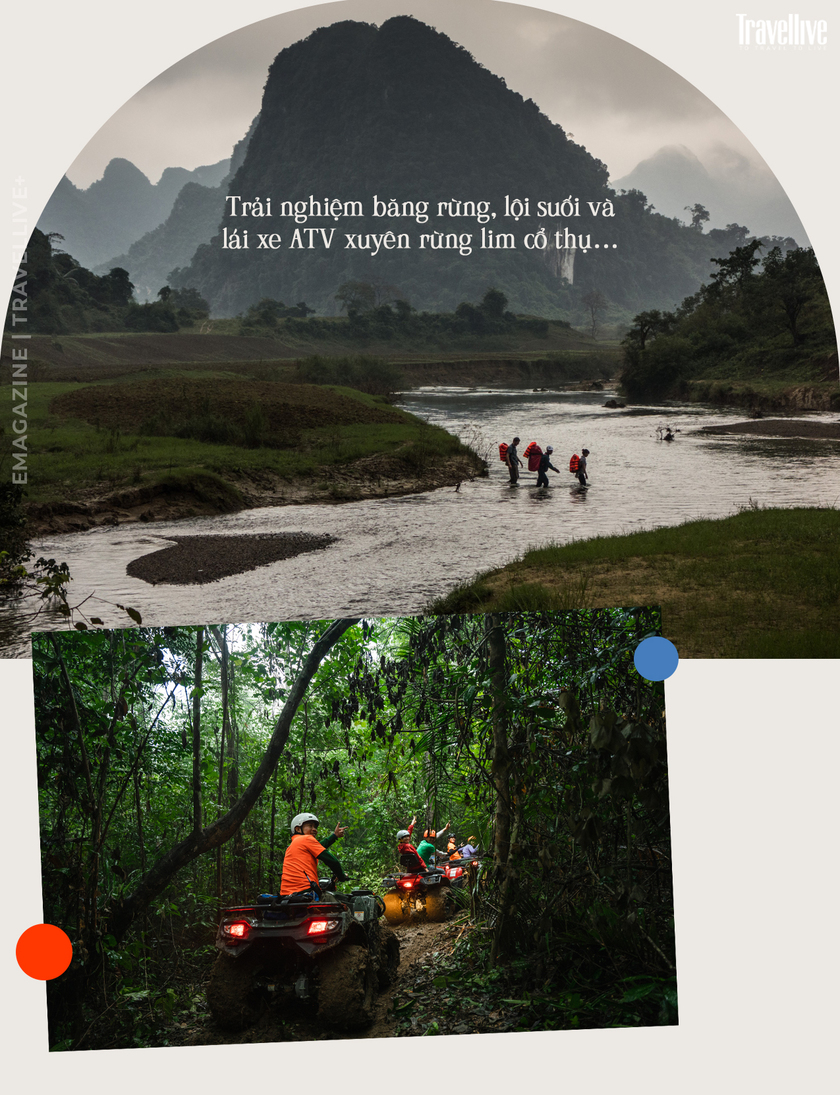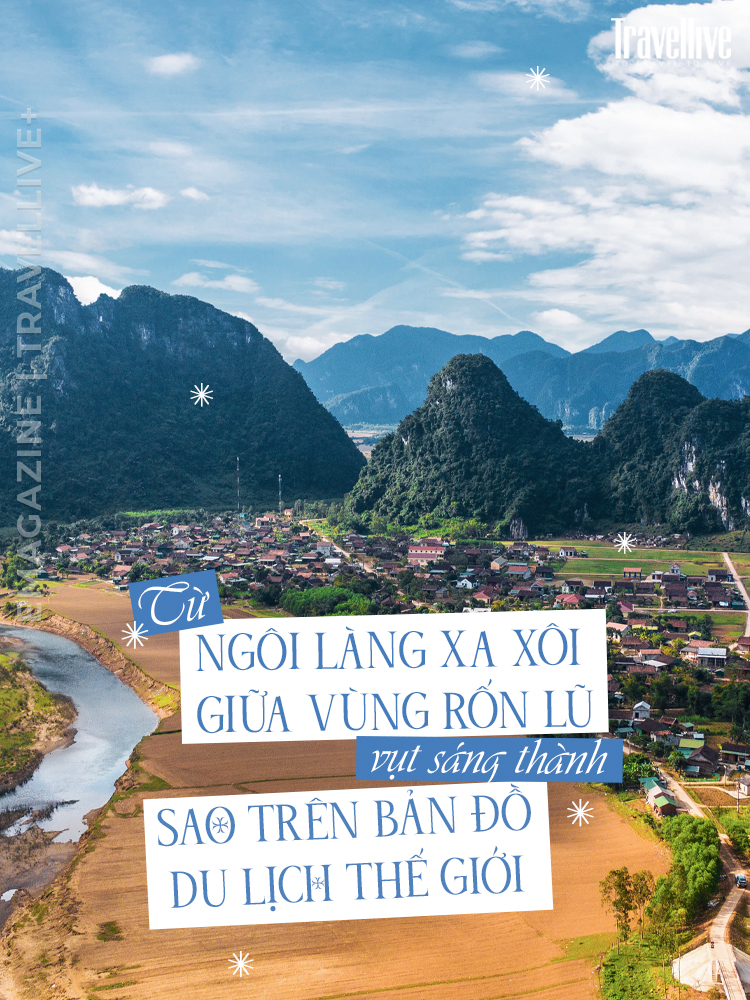From a flood-prone area that was flooded every rainy season, Tan Hoa - a remote village in Minh Hoa district, Quang Binh province, has suddenly become a bright star on the world's sustainable tourism map.

Walking on the road of Tan Hoa village, travelers will find themselves in the middle of a countryside that is both simple and has a rare beauty of mountains and rivers. There are red tiled roofs, each house's garden is very small and neat, surrounded by green wooden fences dotted with pink and red flowers.
Occasionally, in the opposite direction, you will see a farmer smiling gently, or children playing tag, cycling carefreely on the village road and looking at visitors with eyes that are both shy and curious. Those are the simple moments that conquer any visitor who is looking for a time to slow down after the hustle and bustle of the city. And that is how the ordinary things make the brand "The best tourist village in the world" for Tan Hoa.
In fact, Tan Hoa village - although the name is still unfamiliar to most tourists - has appeared in famous films of Vietnam and the world. Located in the middle of a valley, surrounded by limestone mountains and endless fields, this remote village possesses a charming natural landscape, especially the Tu Lan cave system that captivates people's hearts. Tan Hoa has become the setting for filming famous films, most notably the blockbuster "Kong - Skull Island" by director Jordan Vogt-Roberts.

Films did not really spread the reputation of this peaceful village, but it was not until the climate-adaptive tourism model was born that both the lives of local people and the position of Tan Hoa changed.
Not many people know that before being honored as the best tourist village in the world, Tan Hoa was the “flood center” of Quang Binh. This small village located in the downstream of Rao Nan River is submerged in water every flood season in the last months of the year, the water can rise up to 12 meters when the flood reaches its peak.
Since the historic flood in 2010, Tan Hoa commune residents have learned from experience and received government support to build flood-proof houses. The initial flood-proof floating houses were built to help ensure human safety, and households with conditions could build additional small houses to raise pigs and chickens during the flood season. As the water level rose, the floating houses followed, and Tan Hoa residents proactively welcomed the flood instead of running away from it like before.
From the flood-prone area of Quang Binh, Tan Hoa has taken another step forward in its transformation. In early 2023, a climate-adaptive tourism model began to be implemented in Tan Hoa. Local authorities and the tourism industry “joined hands” to turn Tan Hoa into a key tourism center in the Northwest of Quang Binh. Villagers who used to go to the forest, farm, raise livestock all year round, etc., began to learn about tourism.

Thanks to the government's encouragement, the people have linked up with Oxalis - an adventure travel company based in Phong Nha (Quang Binh) and started welcoming tourists to stay in their own flood-proof houses. 10 households, each of which received an investment of 150 million VND to build homestays and train them in the smallest skills such as cleaning rooms and cooking to both preserve their identity and suit tourists' tastes. The simple floating houses have been transformed into small, pretty homestays, and the Tan Hoa people's home-cooked meals have been joined by guests from all over the world, cooking and enjoying traditional specialties.
This tourism model has proven its effectiveness and has been recognized by the World Tourism Organization (UNWTO) as a rural tourism model that respects and preserves natural and cultural values, while promoting the value of community tourism and making a clear commitment to sustainable development.
Although starting its tourism journey with modest numbers, the remote village in the Central region has surpassed 260 tourist villages from 60 countries around the world to win the “World’s Best Tourist Village” award in 2023 by UNWTO. The most highly appreciated thing is the green, sustainable tourism development model and tourism products that adapt to weather and climate change.


A must-do on a trip to Tan Hoa is the experience of sleeping in a floating homestay. From the front, few people can see that the flood-proof house looks too different, even quite similar to a stilt house in the highlands. Small but powerful, these homestays can be raised and lowered with the water flow during the flood season. About 20 empty barrels below will help the house float, surrounded by three or four fixed poles more than ten meters high acting as anchors.
Inside the house was fully furnished like a hotel, from beds, electric lights to bathrooms with hot water heaters. In the quiet space of the countryside at night, occasionally between the sounds of frogs and crickets, there was a strange rumbling sound. That was the sound of the barrels expanding below.

And if you come to Tan Hoa right when the flood season is about to come, who knows when you wake up tomorrow, you will find yourself surrounded by water! That is the joy of experiencing weather-adapted tourism. Don’t worry, the house is really sturdy and safe for you to enjoy your vacation right in the middle of the flood season.
Another interesting experience is to immerse yourself in the daily life of the locals. Tan Hoa village has about 3,300 people, all of whom are Nguon people. The Nguon people are a Viet-Muong community of about 35,000 people in Minh Hoa district, Quang Binh province. They have not been recognized as an ethnic group, but they have their own unique language, culture and rich folk arts.

A meal in Tan Hoa with the Nguon people is both strange and familiar from the familiar ingredients, but the way of preparation and name is very different. The daily meal served to guests by the Nguon people includes Com Poi, Thu Lang (sweet potato leaves), Oc Tuc (snails), Ca Lao... Com Boi is corn or cassava, rice... soaked in boiling water, drained before pounding, gradually getting the powder. The mixture is then kneaded with water, fluffed and steamed. If you want, you can completely prepare the meal with the host to have the opportunity to chat, learn more about the local life, culture and cuisine.
If you want to explore around the village, there are plenty of options. Exploring the Tu Lan cave system, trekking through the jungle, swimming, driving ATVs through ancient ironwood forests… are all adventurous experiences suitable for all ages.

Tan Hoa is located about 70 km from Phong Nha, 130 km from Dong Hoi city center. From Hanoi or Ho Chi Minh City and other provinces, if arriving at Dong Hoi airport, visitors need to travel about 100 km to the Southwest along Ho Chi Minh road for more than 2 hours and 30 minutes to reach Tan Hoa. This route will pass through Phong Nha town, Da Deo pass and Khe Gat airport - a historical relic of the anti-American resistance war.
If starting from the center of Dong Hoi city, visitors can take National Highway 1A, about 130 km through Bo Trach, Quang Trach, Tuyen Hoa districts to Minh Hoa district to reach Tan Hoa village.
















